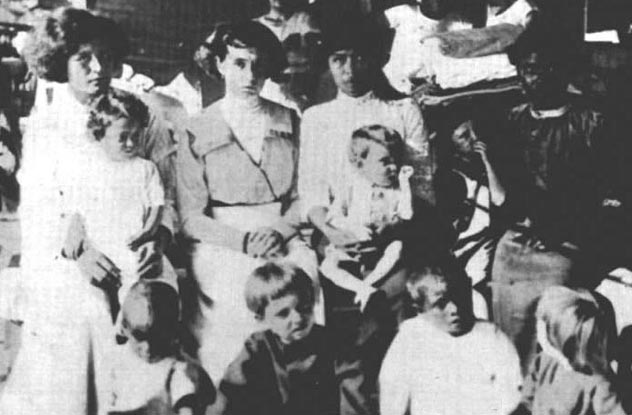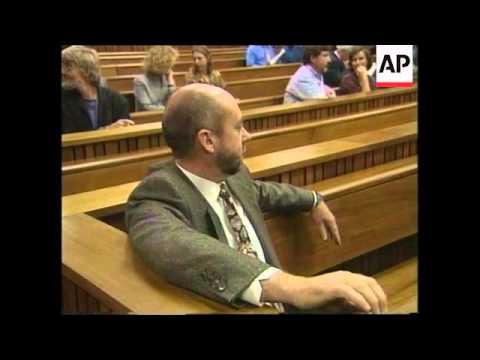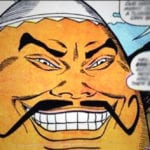10 The Napoleon Of Crime
Adam Worth’s life was average until he joined the Union Army and was killed at Bull Run. Well, that’s what the paperwork said anyway. Actually, Worth was merely wounded, but he used the error as an opportunity to start life anew as a professional criminal. His first scheme involved joining random regiments, collecting the bounty for signing up, and then deserting. When the war ended, Worth headed to New York, where he organized a gang of pickpockets. After slipping up and serving time in Sing Sing, Worth moved into the big leagues. In 1869, he and his gang rented a shop beside Boston’s Boylston National Bank. Purportedly selling “Gray’s Oriental Tonic,” Worth was really digging a tunnel from the store basement into the bank vault. In November, the crew broke through the wall and carted off all the cash they could carry. With the Pinkertons on his trail, Worth absconded to London, where he disguised himself as an English gentleman, bought a yacht and a few racehorses, and became kingpin of a criminal organization that stretched across the globe. Worth plotted robberies and heists from the safety of his flat and sent minions off to do his bidding. Worth really made his mark in 1876, stealing Thomas Gainsborough’s portrait of “Georgiana Duchess of Devonshire” from a London gallery. Worth hid the painting in a false bottom of his trunk and was so obsessed with Georgiana that he sometimes kept the portrait under his mattress so he could sleep on it at night. But the master thief was eventually arrested for robbery, and after five years behind bars, he was a broken man. It seemed he was doomed to live in poverty until he befriended the famous detective William Pinkerton. The detective helped the Napoleon of Crime sell the portrait of Georgina to the very gallery from which he’d stolen it.
9 The Man Who Built A Killdozer
Marvin Heemeyer started out as the victim. The Colorado man owned a muffler repair shop, and everything was going fine until Mountain Park Concrete, Inc. showed up to buy him out. When Heemeyer refused to sell, the bigger company started playing dirty. They planned to cut off the road to his store and asked the city council to rezone Marvin’s property. Not only did the city agree, city officials also fined Heemeyer and vetoed his plan to build an alternate route to his shop. So Heemeyer sold his property—and started building a tank. He armored the cabin of a bulldozer with 30 tons of concrete squeezed between 1-centimeter (0.5 in) steel plates. He equipped his Killdozer with cameras and monitors, rigged up gun ports, and packed plenty of supplies. The entire time, he recorded ominous rants, warning that, “Sometimes reasonable men must do unreasonable things.” In 2004, Heemeyer drew up a hit list, climbed inside his Killdozer, and plowed through his own muffler shop’s wall. He rolled through the Mountain Park Concrete plant, flattening it. And then he turned to the town at large. Cops struggled to stop Marvin’s machine. They shot it repeatedly, tried to blow it up, and even challenged Heemeyer to a duel with an industrial scraper. Nothing worked. Citizens fled for their lives, and the crazy mechanic ran over a police car, mowed down the mayor’s house, and even took out city hall. Eventually, a lucky bullet caught the Killdozer’s radiator. As life drained from the tank, Heemeyer aimed for the local hardware store and crashed through the floor and into the basement. The Killdozer was too weak to work its way free, and when Heemeyer checked the monitors, he saw SWAT agents moving in from all sides. Before authorities could cut Marvin out, he put a bullet in his brain. The Killdozer rampage lasted over two hours and caused $7 million in damage. He’d killed no one but not for lack of trying. If that bullet hadn’t hit his radiator, there’s no telling much more damage the Killdozer could have caused.
8 Canada’s Criminal Mastermind
Gerald Blanchard was visiting Austria’s Schloss Schonbrunn palace in 1997 when he spotted the Koechert Diamond Pearl, a 19th-century hairpin worth $2 million. When no one was looking, he used a key to loosen the screws on the case and unlocked all the windows. The next night, Blanchard flew out to the castle and parachuted onto the roof. He climbed through an unlocked window, crept past the motion sensors, replaced the hairpin with a gift shop replica, and then rappelled down the side of a building. The next morning, he returned to the scene of the crime and smirked as guests gawked at the piece of jewelry on display. Blanchard also had a successful career robbing banks, but his last job involved working for an enigmatic figure named the “Boss.” This kingpin hired Blanchard to visit Egypt with a load of fake credit cards, and with the help of a handpicked team, Blanchard stole $2 million. Then the police kicked in his door. During one of his previous bank robberies, a busybody had spotted his car and taken down his license plate number. After tracing his vehicle, Winnipeg detectives tapped his phone and learned all about his crazy plots. But after his Egypt arrest in 2007, the Canadian criminal came clean with the cops, even offering tips on how to beef up bank security. For his cooperation, Blanchard only got eight years in prison. As of 2010, he was a free man and planned on working as a security consultant. As for the Koechert Diamond Pearl, it was found safely tucked away in his grandma’s basement.
7 The Rogue Who Ran His Own Torture Prison
Jonathan Idema loved telling stories, especially about himself. He claimed he saved Bill Clinton from assassination, discovered a plot to sneak suitcase nukes out of Lithuania, and inspired George Clooney’s character in The Peacemaker. The truth is even wilder. As a boy, Idema was inspired to join the Special Forces after watching John Wayne’s The Green Berets. After his discharge in 1984, this gung-ho warrior worked with security forces in Haiti and Thailand before coming back home to open a hotel for dogs. Then the Twin Towers fell, and Idema decided his personal mission in life was to hunt down terrorists and kill Osama bin Laden. He sneaked into Afghanistan and set up shop in Kabul’s Mustafa Hotel, winning the hearts of journalists with outlandish tales of working for the American government. He gave interviews on NPR and FOX and even sold a video of alleged terrorist training camps to CBS. Idema didn’t really work for the government. He was a con man who’d served time for fraud. But in Afghanistan, he was a king with his own private army. Named “Task Force Saber 7,” this rogue team kidnapped anyone Idema suspected of terrorism. The unlucky victims were thrown into Idema’s own prison, where they were hooded, beaten, hung upside down, and nearly drowned. High-ranking officials surreptitiously approved of Idema’s work and turned a blind eye to his actions. Others actually believed he was a government agent, enabling him to trick NATO into helping out during his kidnappings. However, he went too far when he arrested a member of the Afghan Supreme Court. Realizing the potential PR disaster, the Americans finally slapped cuffs on the guerrilla. Idema was tossed into an Afghan prison, receiving a fantastic cell, complete with fancy rugs and satellite TV. He was pardoned three years later by Afghan President Hamid Karzai.
6 The Fake CIA Bank Robber
Henson Torres was a 21-year-old Virginian just minding his own business when he got a text from an old friend, Carolina Villegas. Villegas promised she could get him a job earning $25,000. All he had to do was rob a few banks. Torres thought it was a joke until Villegas introduced him to the mysterious voice of “Theo.” Over the phone, Theo explained he was a CIA agent launching “Operation Downstrike,” a special mission to test local bank security. If Torres pulled off a heist, he’d earn a nice chunk of change. If he got arrested, the feds would let him go. Convinced, Torres and Villegas set off. As Theo instructed, Torres offered a bank manager a note claiming he needed ransom money to save his kidnapped family. It didn’t go according to plan. None of the banks forked over any cash. But still, Torres was hooked. The next day, with Theo’s coaching and promises of a government job, Torres was at it again. He even convinced his relatives to join the scheme, showing them an official-looking document from Theo that legitimized the whole deal. After several unsuccessful robberies, the cops nabbed Torres. They thought his story was bonkers—until they got a call from Theo. “You can’t make people disappear,” he snarled, “only we can.” Using legal language, Theo convinced the cops he was from the CIA and Torres was being groomed for a South American operation. He even hired lawyers to defend Torres on the government’s behalf. However, Theo never paid the attorneys and didn’t show up to a meeting with police. Suspicious, the cops traced his number to Matoaca, Virginia where they found mentally unstable, 26-year-old Joshua Brady. Brady lived with his mom, read CIA books, and had a record of impersonating imaginary people. Facing serious jail time, Brady admitted to the charade and made a deal with prosecutors. Today, this so-called spy still lives at home and has to stay there for three years under his mother’s supervision.
5 The Lighthouse Keeper Who Made Himself King
Clipperton Island in the Pacific was a popular piece of property back in the late 18th and early 19th centuries. England, France, Mexico, and America all wanted it for its rich piles of guano, but after years of bickering, everyone agreed to let Italy decide what to do with the place. In the meantime, Mexico kept the island safe. So in the early 1910s, settlers led by Ramon Arnaud guarded the atoll. The islanders depended on the mainland for their supplies, and when the government grew preoccupied with putting down a revolution, the food stopped coming. Without fresh supplies, the settlers contracted scurvy, and soon there was only Arnaud, a few soldiers, and about 12 women and children. The lighthouse keeper, Victoriano Alvarez, was also there, but he mostly kept to himself. Then one day, Arnaud and the remaining soldiers drowned in a rowboat accident. Shortly afterward, a hurricane destroyed almost every building on the island. Just when things seemingly couldn’t get worse, Alvarez popped out of his lighthouse, grabbed all the guns, and chucked them into the water—except for one rifle, which he kept for himself. He then proclaimed he was king of the island, and the women and children would do whatever he said. For two years, the King of Clipperton beat and raped the women on a regular basis. One of his victims was only 13. If anyone fought back, he loaded his rifle and murdered them. His psychopathic dictatorship lasted until July 1917, when Tirza Randon armed herself with a hammer and knife and didn’t stop swinging until the lighthouse king was dead. An American ship arrived later than day. The sailors took the survivors home and kept the killing off the official report so the woman wouldn’t face prosecution.
4 The Iron-Fisted Mayor Of Davao City
Rodrigo Duterte rides to work on a motorcycle, carries a pistol, and curses like a drunken sailor. He’s also the mayor of Davao City, one of the biggest cities in the Philippines, although he acts more like a Wild West marshal, posing for journalists with a shotgun in his mitts. This tough guy routine isn’t an act. Nicknamed “Dirty Harry” and “The Punisher,” Duterte is judge, jury, and executioner. When Duterte was first elected mayor in the ‘80s, Davao City wasn’t such a great place. This Filipino island town was home to smugglers, pirates, and Jihadists. Determined to clean up the streets, Duterte cracked down hard on criminals and terrorists and did such a good job that people kept electing him. Duterte isn’t a big believer in trials. As he puts it, “What I want to do is instill fear. If you are doing an illegal activity in my city . . . you are a legitimate target of assassination.” Working with a right-wing group of vigilantes known as the Davao Death Squad, Duterte has caused nearly 900 people to “disappear.” Cops tell a crook he’s ended up on “Duterte’s list.” Either he gets his act together or gets out of town. If the criminal doesn’t comply, two men on a motorcycle show up and fill him with lead or stab him repeatedly with butcher knives. The Death Squads don’t just attack murderers and kidnappers. Duterte wants his crew to wipe out all of “society’s garbage,” including teenage hoodlums and kids living on the streets. Under Dirty Harry’s iron rule, vigilantes have even murdered children as young as 12. Meanwhile, high-ranking politicians praise his tactics, businesses grow, and tourism skyrockets.
3 The Man Who Made A Vampire
When conspiracy theorists have nightmares, they dream about Edward Lansdale. This shadowy Air Force officer has popped up in countless plots, some fake, some shockingly real. During the 1950s, he rigged the South Vietnamese elections and once suggested overthrowing the French government to preserve America’s interests in Southeast Asia. Later, he was put in charge of Operation Mongoose, a covert mission to kill Fidel Castro using wacky gadgets like poisonous pens and exploding sea shells. When it came to murdering enemies and spreading fear, Lansdale was an artist. Perhaps the best example of his cruel creativity took place in the Philippines in the 1950s. When Communist Huk rebels rose up against the Filipino government, Lansdale was called in to fix the situation. An expert on psychological warfare, Lansdale played on the Huks’ superstitious beliefs, specifically their fear of the aswang. The aswang is a shape-shifting vampire witch that dines on human fetuses and drinks blood. Lansdale spread stories that one of these bloodsuckers was prowling around the Huks’ hillside headquarters. Lansdale and his team then sneaked into the jungle one night and waited for a Huk patrol to come marching along. In the dark, Lasdale’s men snatched the last guy in line, put two bite-sized holes in his neck, and drained all the blood from his body. The gory deed done, they placed the corpse where the Huks would stumble upon the aswang’s latest meal. The very next day, the terrified rebels packed their gear and abandoned their mountain hideout.
2 The Most Violent Drug Lord In Mexico
Miguel Angel Trevino Morales spent his teenage years in a Texas gang before joining up with Los Zetas, a gang made up of Mexican Special Forces deserters. Thanks to hard work, determination, and a tendency to shoot first and ask questions never, Trevino Morales quickly became Los Zetas’ number one man. The gang smuggled cocaine, invested millions into horse breeding, and conquered 11 of Mexico’s 31 states. They also killed a lot of people. Rumor has it Trevino Morales couldn’t sleep if he didn’t murder someone during the day. In addition to the run-of-the-mill hangings, assassinations, and decapitations, the man known as “Z-40” enjoyed sticking his victims into oil barrels, soaking them with gasoline, and tossing in a match. He nicknamed this little method guiso, which is a traditional meat stew. Trevino Morales also enjoyed beating people with wooden boards, cutting out hearts, and carving the letter “Z” on stomachs. But this madman was generous and included others in the fun. He ran a training camp for killers where he forced new recruits to murder victims with either a sledgehammer or machete. He also hired 12- and 13-year-old kids to carry out his dirty work. But perhaps his most horrifying crime was a game he invented called “Who’s Going to be the Next Hit Man?” In 2011, the Zeds pulled over buses full of immigrants heading for the US. They gave the passengers weapons and forced them to fight to the death. After a whole lot of bloodshed, the one man left standing was drafted into the gang as an assassin. This psycho’s killing spree ended in 2013, when he left his hideout and was picked up by a Marine helicopter. The man worth $7.3 million in reward money, who allegedly murdered 2,000 people, gave up without firing a shot.
1 South Africa’s Doctor Death
When people call you “Dr. Death,” chances are good you’re an evil dude. Wouter Basson was one of the worst. This South African scientist ran the country’s Chemical and Biological Warfare (CBW) program and spent all his time dreaming up creative ways to kill black people. Basson came to power in the 1980s, a heated period in South Africa’s history. P.W. Botha was president, and under the “Old Crocodile,” thousands were detained without trial, terrorists attacks spiked dramatically, and despite protests, Nelson Mandela remained behind bars. Tense government officials desperately looked for ways to keep the black community under control. Fortunately for them, Basson was full of disturbing ideas. Codenamed “Project Coast,” the CBW division tried to develop an infertility toxin to sterilize the black population. They planned on weaponizing thousands of pounds of ecstasy and tried to create grenades loaded with LSD and sedatives. Basson briefly considered assassinating Nelson Mandela with carcinogenic agents and even pondered using snake venom to take out opposition leaders. All psychotic schemes must come to an end, and after the apartheid government collapsed, the doctor was charged for his crimes. But he escaped criminal prosecution using the old Nazi tactic: “I was just following orders.” Though he was found guilty of unethical conduct by the Health Professions Council of South Africa, he’s yet to be sentenced. In the meantime, this monstrous scientist works as a cardiologist in Cape Town. Nolan Moore’s favorite fictional villain is probably Roy Batty from Blade Runner. You can’t beat the “Tears in Rain” speech. If you want, you can follow/friend him on Facebook or send him an email.
























